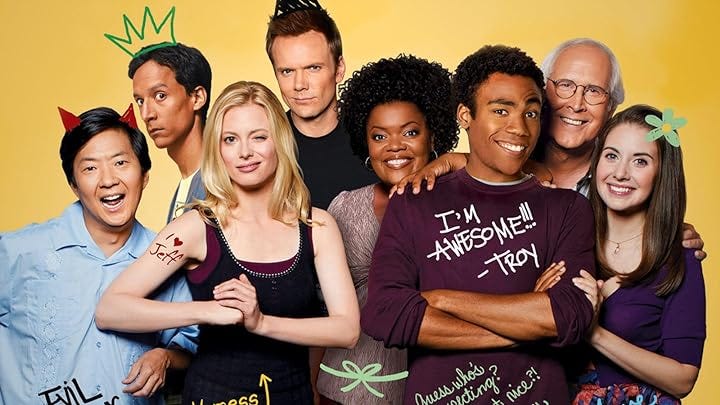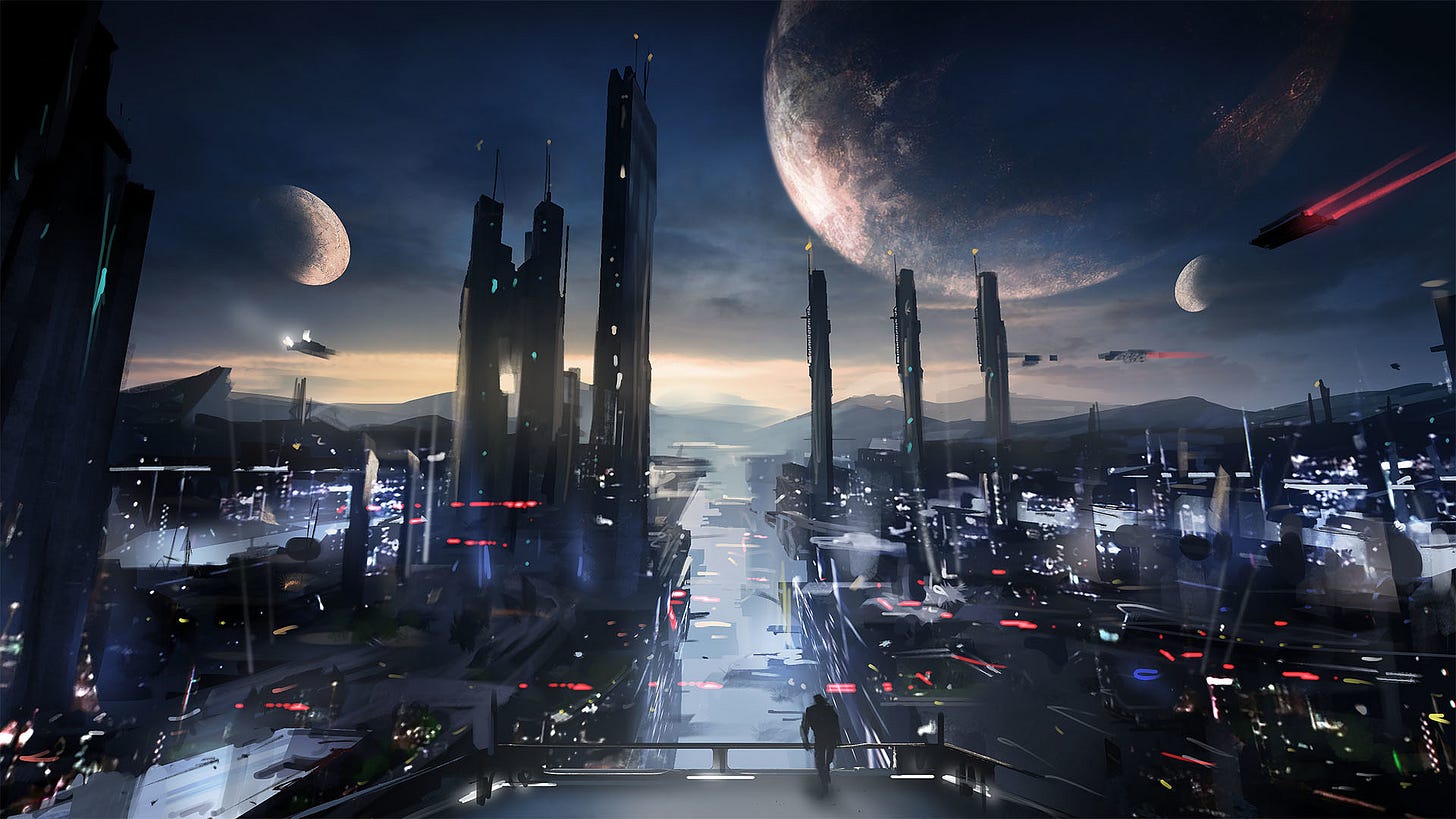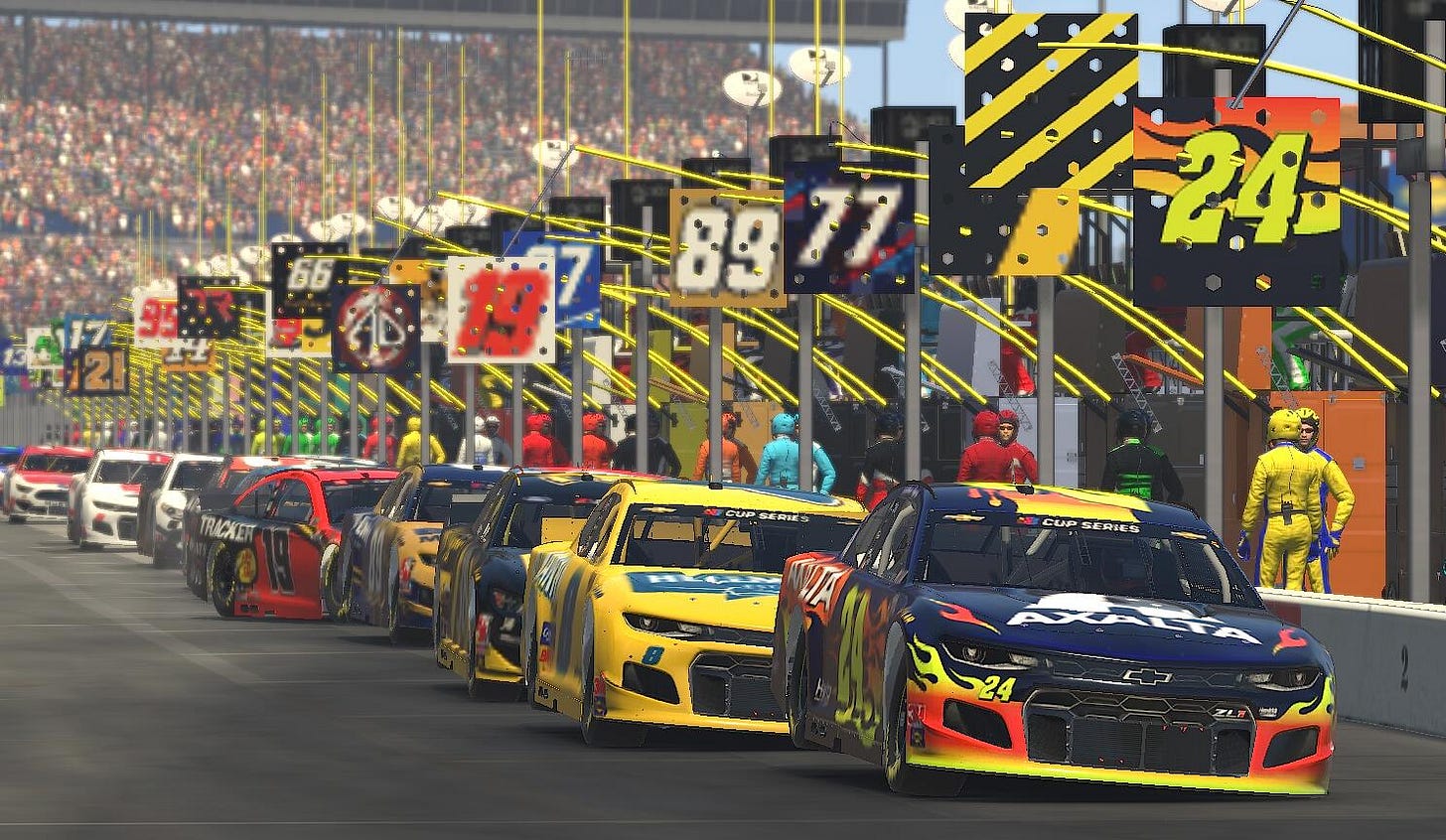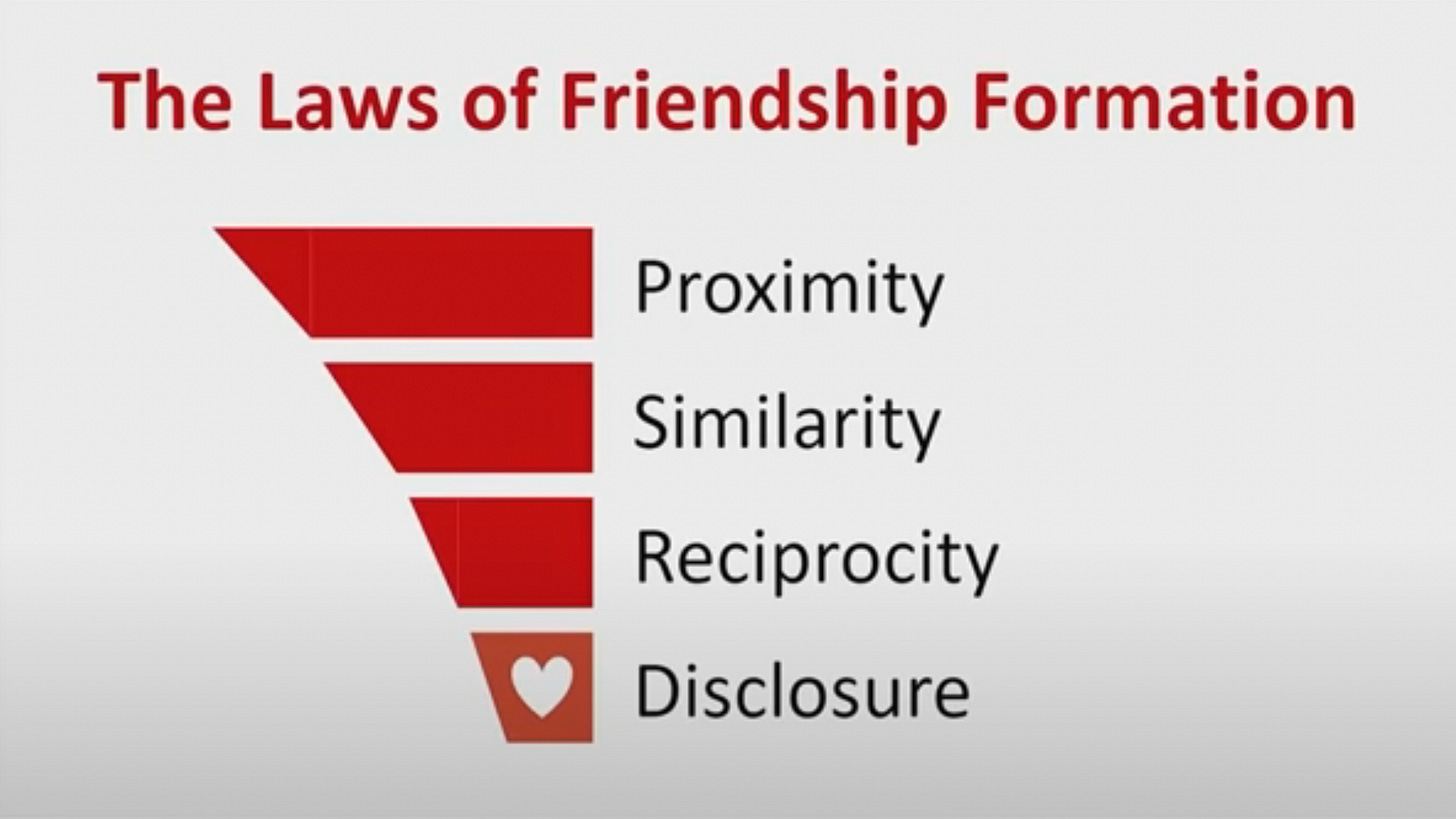Community in the Metaverse
Disclaimer: All the views expressed in this article are my own and not those of my employer and all the sources of information in this article are public sources of information. This is also purely academic writing and not meant to be taken as investment advice.
What is Community?
When people hear the word community, some think of nonprofits and alumni Facebook groups no one says anything in and some think of crypto. And while Facebook groups and crypto are definitely important aspects of what a community is today, focusing on them can make it easy to miss what makes communities fundamentally important, and how much room there is to grow from where a community is now.
So what is a community and why do people start them?
Sometimes communities are built just to facilitate value exchange between members, such as an entrepreneurial community focused on helping the right founders, operators, and investors find each other.
Other times these communities are built very intentionally around accomplishing a goal outside of the members meeting each other such as passing legislation, advocating for a social cause, or building awareness for a brand.
I have also seen communities that revolve around providing access to an individual or group. For example, Patreons or fitness influencers that form communities to help them monetize essentially by selling more exclusive access to themselves. Here the value comes more from time with the expert rather than time with other members of the community.
Regardless of the goal, people form communities because they believe in the power of collective action and how building meaningful relationships unlocks this power.
Why is Community Important?
Building and leveraging meaningful relationships is what community is all about and the research bares out that meaningful relationships are not just a nice to have, but a core human need. Evidence of this can be found everywhere:
Strong social connections are the number one predictor of living a happy life (Lessons from the longest study on happiness | TED)
"Social determinants drive more than 80 percent of health outcomes" (Health Payer Intelligence). Essentially having strong meaningful relationships does more to keep you healthy than almost anything else.
Recent research from Boston University also shows that for children and adolescents in poverty access to a community of even informal mentors promotes economic mobility (Gowdy, Marilyn). In today's capitalist society, money is not enough to succeed and neither is just access to the internet. To really provide the means of sustainable economic progress in today's knowledge economy, we will need to invest in helping children and adolescents gain access to the right people who know what information is important to know and what isn't.
If community can be the single greatest mechanism to make you happy, healthy, and even help you escape poverty, then what could be more important than to figure out how to do right?
Current State of Community
While there are several thriving communities online and in-person, the current state of community leaves a lot to be desired. Specifically:
In-person communities being tied to a physical location can be a high barrier to social mobility
Virtual communities currently lack the means to organically facilitate the serendipitous repeat interactions needed to form deep relationships
Physical Location As A Barrier to Equality
While it is obvious that strictly in-person communities have the disadvantage of being tied to a physical location and thus cannot easily scale as easily as virtual online communities, it may not be clear what the social implications are for this constraint.
According to research done by Raj Shetty and his team at the Equality of Opportunity Project at Harvard, even just within the United States where you live already has a considerable impact on your success outcomes. This research found, for example, that the probability that a child reaches the top quintile of the national income distribution starting from a family in the bottom quintile is almost 3 times higher if you were born in San Jose (12.9%) than if you were born in Charlotte (4.4%). (National Bureau of Economic Research). Thus being born in the wrong city within America puts you at a major disadvantage.
And across borders, economic equality is even greater. Not only was the average income of people living in North America 16 times higher than that of people in sub-Saharan Africa last year, but 71 percent of the world’s population live in countries where inequality has grown (United Nations Department of Economic and Social Affairs).
So there is great inequality across physical locations, why does this matter?
If access to quality community is a powerful lever for economic mobility as the research mentioned earlier suggests, then this suggests provides evidence that the reason for this inequality across physical locations could be because of more than just a lack of access to funds in poor areas. The more unfair advantage rich physical locations have is the inside knowledge about what to do and not to do passed along a network of communities and mentors in these areas. A great example of this is financial literacy.
Today, anyone with a smartphone and an internet connection can buy stock without too much capital. But those with high income are still much more likely to own any amount of stock than those with middle or lower incomes. As US News reports, "Some 92% of those in the top 10% of the income ladder owned stock in 2019 compared to 56% of those considered middle class."
And owning stock is a big lever of moving to the upper class. U.S. news also reports that "looking at net worth rather than income, a total of 94% of those whose net worth placed them in the top 10% of wealth distribution owned stocks in 2019."
So, to summarize one more time, people in poverty are not only entrenched in structural poverty because of their lack of access to funds, but also because their physical location has a lack of access to a community that can personally guide them through the knowledge barrier of what to do and not do even with the limited time and resources they do have. And this knowledge is seldom included in policy for the poor or foreign aid.
Read more
In Climbing Income Ladder, Location Matters (Published 2013)
Lack of Engagement in Virtual Communities
While virtual communities are not constrained to physical location, creating a successful virtual community has its own difficulties. According to Gartner, 70 percent of online communities are destined to fail. And even worse still is that despite the billions of dollars being poured into online communities, for many virtual communities almost 70 percent of customers never even log in. Several reasons were cited for this, some of which include
Uninspired discussions
Low engagement
No pathways to build relationships with other members
The last problem is especially interesting when viewed from the perspective of one of the powerful principles of forming meaningful relationships: Proximity (Get more information here).
Proximity in Virtual Communities
So what does creating proximity in a community mean? Creating proximity is creating the space for serendipitous repeated interactions. Essentially what this means is that healthy communities provide ample opportunities for members to bump into each other without a high level of intentionality. This allows members to naturally get to know each and build familiarity in a way that feels more natural than transactional. Usually people don't want the first time you interact with them to be because you need something. Often things go much more smoothly when it is a happy coincidence someone you have gotten to know simply because you keep bumping into them can help out in some way (if this feels creepy, good 👍. Further discussion about this below 👇👇👇).
In real life communities, this sense of proximity is built through literal proximity where public open areas become places where people often cluster and bump into each other. But virtual communities struggle with this immensely. Even with online events where members can unexpectedly run into each other over and over again, the current infrastructure of using tools like zoom makes it hard to even notice when this happens. And other methods such as matchmaking can seem transactional or having public channels in Slack or discussion boards can be noisy and just not very fun or engaging to be a part of.
What is the Metaverse?
The term "metaverse" was coined by author Neal Stephenson in his 1992 science fiction novel "Snow Crash," in which he envisioned lifelike avatars who met in realistic 3D buildings and other virtual reality environments (USA Today). As shown in the movie Ready Player One, it is essentially a digital 3D world we can enter into that can be shaped to look like our current world or like something completely different altogether.
Many have done a far better job then that I could of thinking through what the metaverse really is and what it means for society. Shaan Puri in a tweet describes it as "the moment in time where our digital life is worth more to us than our physical life."
Not Boring by Packy McCormick also has a really great article about this in which he discusses how NFTs, Web3, and the virtual economy of the Metaverse might be the next evolution of the internet.
Whether you want to dip your toes in with the tweet or go really deep with the article, I'll leave the visionary descriptions of the metaverse to those more qualified than me. For this article, the simple description laid out by Neal Stephenson of the metaverse being a 3D world where individual people are represented through their own lifelike avatars is good enough.
Community in the Metaverse
On a high level, community in the metaverse could be a bridge between the opportunities and costs of in real life and virtual communities, but beyond this provide completely new dimensions to innovate along. However, living in the metaverse will also come with unparalleled ethical risks and concerns that are far too important to be an afterthought.
Here are just a few of the exciting ways in which the metaverse will transform communities as we know them, and the ethical risks that come with them.
Transcending Physical Location
Communities in the metaverse are in some sense a future subset of virtual communities so they obviously share the advantage virtual communities have over in real life communities of not being tied to a physical location. To be clear, many of the societal inequalities that come with physical location are political and a result of power structures that moving to the metaverse will definitely not solve.
But communities in the metaverse can actually make much more significant and meaningful strides than even virtual online communities today in bridging the barriers that usually come with physical distance (and therefore expanding the much needed access to community).
A few big examples are:
Language Barriers
As many sci-fi metaverses illustrate, there is a prevalent idea that a fundamental feature of the metaverse would be translating languages in real time as you speak to someone from a different part of the world. So if you speak English, no matter what language someone talks to you in, to you it automatically gets translated and sounds like English to you and vice versa for whatever you say to others.
Ethical Risk: Censorship
This can be a HUGE step forward, but it also actually also opens up it's own rabbit hole on the topic of censorship in the metaverse. For example, would we be allowed to curse in the metaverse? Everywhere in the metaverse, without exception? If so, will it look like what they show in one of my favorite TV shows of all time 😍😍😍, the Good Place? Super funny video to illustrate the point here:
The biggest question here is who gets to choose? As an individual, do you have the right to say whatever you want wherever you are or does the community have the right to set the standard for what goes? And even if it is up to the community, do they need everyone to agree, majority vote, just whoever is most popular decides? Of course this is just an extension of an existing debate on censorship across country borders, but the metaverse makes it all the more relevant.
Cultural Barriers
This is an even more interesting topic. Even if we can all finally communicate with each other, cultural differences can still be a significant barrier to members from across physical locations accessing community. What would be considered offensive behavior in one part of the world is cool 😎 somewhere else. Even just knowing what celebrities, TV shows, and events are trending in a local area gives you a really important shared context that makes ties to a community strong which is. And these are actually really important.
The best version of the metaverse does not destroy, but rather expands the dimensions of that shared feeling of local community which is as it is actually really important, but rather it just doesn't align this feeling of "local" community with physical location. In the metaverse, you don't have to cheer for the Indians baseball team if your physical location is in Cleveland. You can cheer for whatever team is local to wherever you live in the metaverse (or not, who knows how all this stuff will turn out 🙃).
Creating Proximity in Metaverse Communities
Metaverse communities can have a huge advantage over current virtual communities in creating the simulated proximity that in-person communities benefit from. Just as in an in-person community, virtual communities can have virtual public squares and popular local hang-outs that create the space for serendipitous repeat interactions. What would give these spaces an advantage over virtual communities could be as simple as they are just way more fun and engaging. Imagine walking through a luscious park and finding a table to play chess with someone halfway across the world, instead of having to scroll through an endless feed of text in a Slack or Discord channel to see who is available.
Beyond mimicking the public spaces real life communities have, metaverse communities can also enable proximity through fundamentally new ways to co-experience and co-create that better lend themselves to this goal.
Imagine an in real life community of entrepreneurs choosing to celebrate a win at a virtual race track in the metaverse instead of a bar.
Or an online virtual community of architects building a to scale city in the metaverse instead of looking over blueprints on a zoom call.
The metaverse can unlock a universe of experiences that help build trust and familiarity in ways never imagined in the real world.
How Gamification can help build Proximity in Metaverse Communities
You can also really get into the weeds and apply gamification in the metaverse in a way never imagined before. I won't be able to do this topic nearly enough justice so I hope someone else writes about it, but I'll touch on it super lightly since it is so interesting. Just as in games, in the metaverse you can build incentives and environments around slowing increasing your collaboration and trust with others.
You could essentially think of this as the ultimate extension of ice breaker games or trust-fall exercises. To give you an idea, here is a slide from a talk at GDC (Game Developer Conference) by Daniel Cook of the studio Spry Fox that explains how different game modes can be used to build friendship. These could be even more fundamental to creating experiences built around friendship in the metaverse.
Ethical Risk: The Power of Proximity Is Dangerous
While being more intentional about creating this proximity is a powerful tool for communities, it can also be dangerous. In the real world, when we happen to bump into someone it's a nice surprise, but in the metaverse it could be easier to make certain serendipitous interactions more likely than others and it begs the important question, who is designing these spaces, what incentives do they have, and do these incentives and values align with your own? And how would you know if they didn't? Once again, even the real world cities and suburban towns are intentionally designed to serve one outcome or another, but in the metaverse we would want to be really careful about who gets control and why.
So what does this mean for you?
Well, the reason I wanted to write this article is because if you haven't been introduced to the powerful idea of community, or worse still if you have been introduced to an incomplete idea of community, I'm hoping to convince you to give it a second look. Community is something that is really hard to get right and even though thriving communities can be a dangerous hotbed of groupthink and echo chambers, community done right can make us all more happy, healthy, and potentially reduce inequality. But of course, that is just my best guess so far based on what I have read and experienced. If your experience has been the same or different, I would love to hear about it!
If you have already been introduced to the powerful idea of community and are helping run a community, I'm hoping to convince you to give the metaverse a second look. It may become a reality or it may not, but it does raise some really interesting questions about in person and virtual communities and how we can think of them. So what do you think? How would your community look in the metaverse?
If we do one day live in the metaverse, it would be great for us all to come together to think about the critical role community will play in it and how we can unlock the potential of community through it. And if it does come, it would also be paramount for us to think about what risks and ethical questions come with it and how we can best set ourselves up to bring the benefits of community done right and not the horrors of community done wrong.







